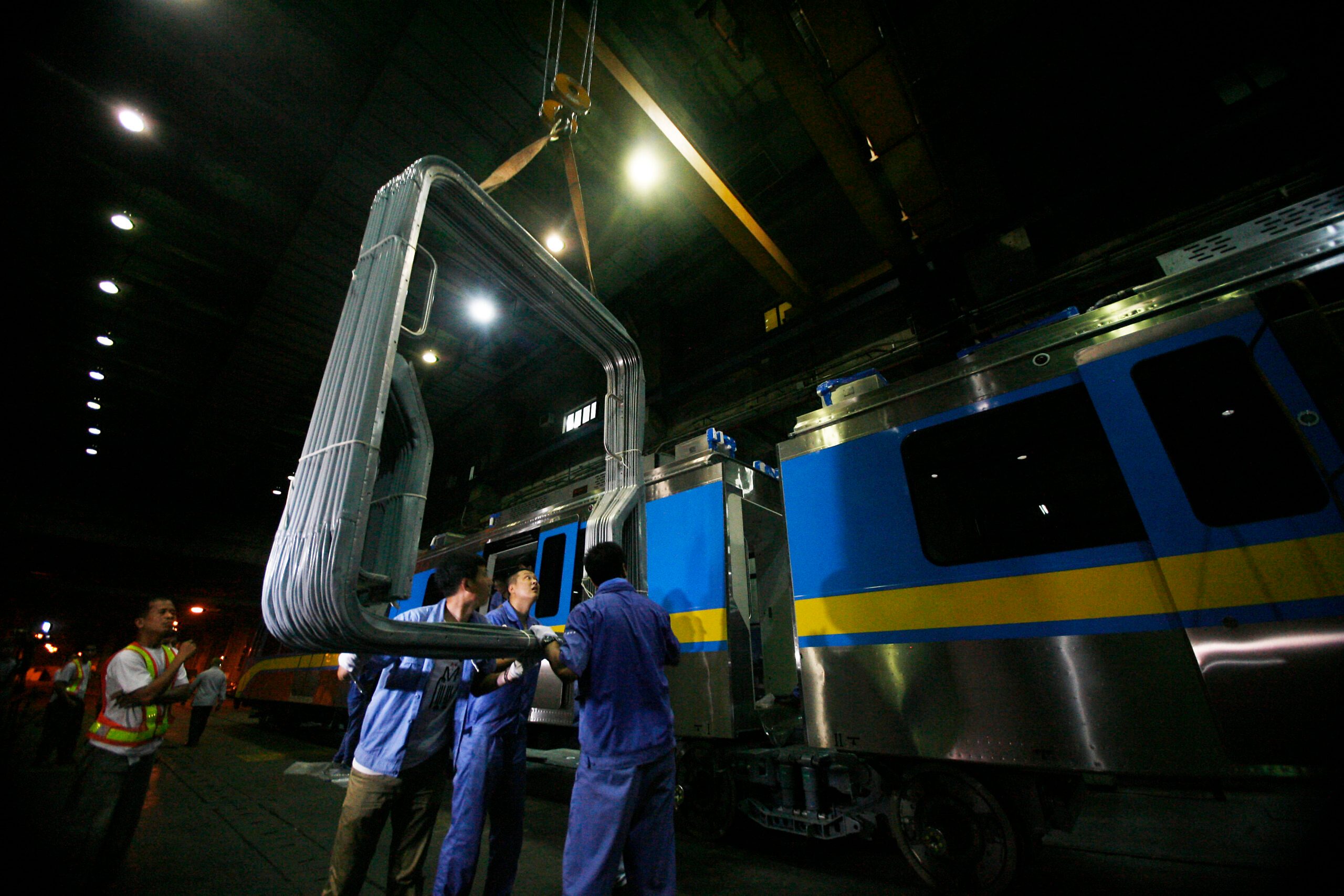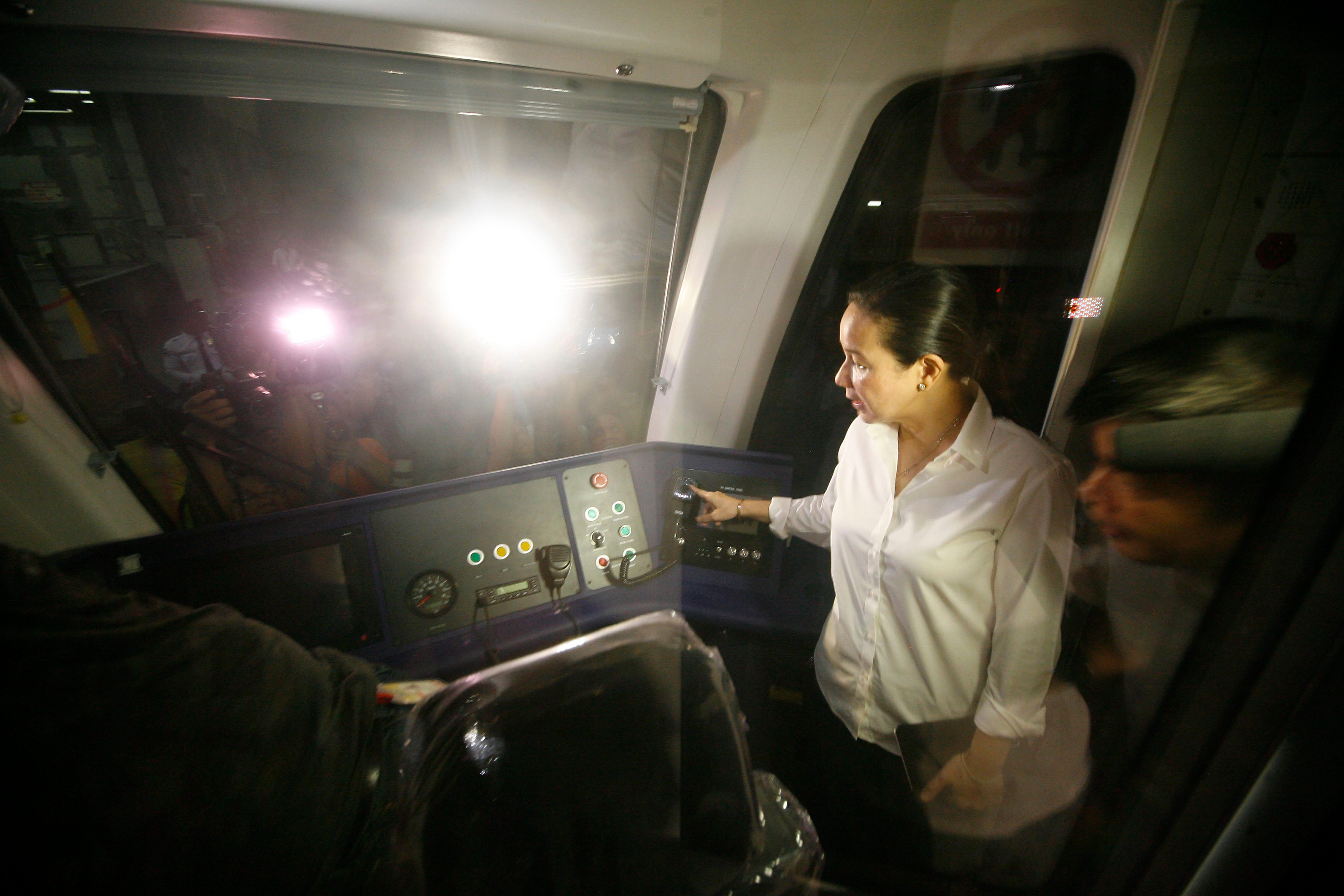SUMMARY
This is AI generated summarization, which may have errors. For context, always refer to the full article.

MANILA, Philippines (UPDATED) – Senator Grace Poe found out that the initial Metro Rail Transit line 3 (MRT3) prototype train car does not have an engine yet.
In her inspection of the MRT3 prototype train car on Tuesday, September 8, Poe also found out that China-based Dalian Locomotive will still have to order the engine from a German manufacturer.
As such, the prototype would not be ready for testing until December.
Transportation Spokesperson Michael Arthur Sagcal confirmed this via text message: “Yes, according to the schedule we released in June, we will conduct static testing from September to November. Dynamic testing will follow from November to December.”
“Acceptance of the prototype should be by the end of December, which means we can place our orders in accordance with the contract by the beginning of January,” he added.
The Philippine government earlier gave Dalian Locomotive the go signal to ship a new MRT3 prototype train car. This will result in lesser maintenance requirement in the future, the Department of Transportation and Communications (DOTC) said in a statement.
The department’s project implementation team is going through a checklist with Dalian Locomotive to ensure the train car is compliant with the technical components of MRT3’s coaches.
“After the prototype’s arrival, it will be assembled by the manufacturer’s personnel, and we will start static testing by September,” DOTC Secretary Joseph Emilio Abaya earlier said.
The department also approved in June the delivery of 48 new train cars starting the first quarter of 2016.

Maintenance issues
Poe, the chairperson of the Senate sub-committee on transportation, stressed on passenger safety as the delivery of the train cars are being completed.
In particular, she expressed concern regarding capacity – that DOTC might order too many trains for the limited or worn out rails of MRT3.
In July, DOTC received 7,296 meters of new steel rails to replace the worn-out segments of the MRT tracks. The MRT, which carries over 600,000 passengers daily – way beyond its operating capacity – suffers from frequent technical glitches, often blamed on broken rails and lack of spare parts.
“It’s our job to do an oversight. P3 billion ($63.96 million) of taxpayers’ money is at stake for the MRT3 rehabilitation. We have to make sure that MRT3 rails can handle these new trains. Let’s not forget MRT3 was designed with only 350,000 (ridership) capacity daily. Now, we’re going beyond that, 700,000 maximum at that,” Poe pointed out in Filipino.
Transparency urged
While she took notice that the protototype already has safety handles and standard seats built, Poe wanted to know what is the warranty clause involved should the trains incur defects.
“Sapagkat doon tayo nagkakaroon ng problema sa pangmatagalang maintenance,” she said. (Because that’s where we incur a problem: in long-term maintenance [of the trains].)
On September 2, DOTC announced that it finally secured the approval of the Government Procurement Policy Board (GPPB) to enter into a negotiated contract to fast-track the procurement of a 3-year maintenance provider of MRT3.
“We were given the go signal by the GPPB on August 20 to pursue this mode of negotiated procurement. We’re targeting to award the contract within the year, and to have the new maintenance provider begin its services in January next year,” Abaya ealier said in a statement.
While waiting for GPPB approval, the DOTC resorted to the current 6-month multi-discipline approach, wherein different maintenance contractors were engaged for each of the 7 components of MRT3.
This took place after the failure of the DOTC’s two previous attempts to bid out the 3-year maintenance contract in October 2014 and January 2015.
Thus Poe expressed concern over the emergency bidding, as contracts from such biddings resulted in tapping inefficient maintenance providers, citing the case of PH Trams.
In July, the Ombudsman indicted former MRT3 general manager Al Vitangcol III and 5 incorporators of Philippine Trans Rail Management and Services Corporation (PH Trams) for graft over the MRT deal.
Poe, however, inquired why Abaya was excluded from the graft charges. In September 2014, the Ombudsman Field Investigation filed a graft complaint against Abaya and 20 others over an allegedly anomalous contract for the mass transit system.
“I”m for fast bidding process. But it has to be transparent. That’s why I’m saying, we have to participate to ensure that we won’t be taken advantage of and be given a defective product,” she said in Filipino.
Poe also inspected on Tuesday the MRT North Station and its new ticketing system. The new tap card system is already in place, but she noticed that it is not being used yet, Poe told DZMM. She also inspected the women’s restroom at the station, which already has running water but the facility is not fully fixed yet.
Senator Nancy Binay also joined Poe at the MRT3 depot in Quezon City on Tuesday. – Rappler.com
Add a comment
How does this make you feel?
There are no comments yet. Add your comment to start the conversation.